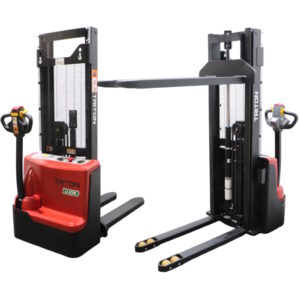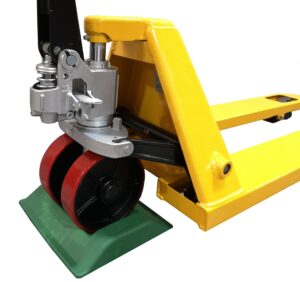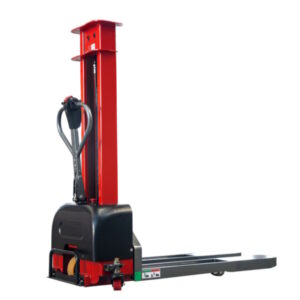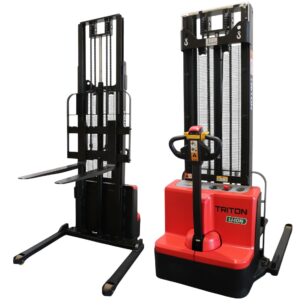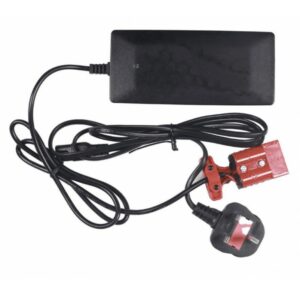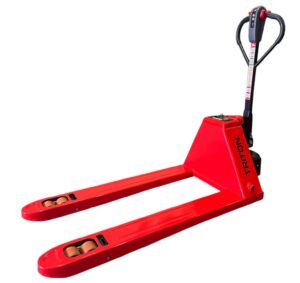Lifting heavy objects manually is unavoidable in certain circumstances, but it also one of the primary causes of back injury. It’s important to know the right techniques and to plan your journey before any kind of heavy lifting. If the object you need to move doesn’t allow you to abide by these guidelines, then it is strongly recommended you use equipment like a manual stacker or pallet truck or find additional help.
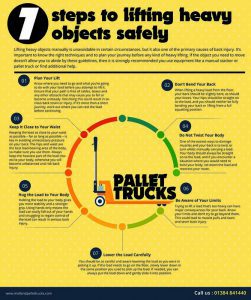
- Plan Your Lift
Know where you need to go and what you’re going to do with your load before you attempt to lift it. Ensure that your path is free of cables, boxes and any other obstacle that may cause you to fall or become unsteady. Not doing this could result in serious back strain or injury. If it’s more than a short journey, work out where you can rest the load before continuing.
- Keep It Close to Your Waist
Keeping the load as close to your waist as possible – for as long as possible – is key in avoiding unnecessary pressure on your back. The hips and waist are the best load-bearing area of the body, so make sure you use them. Always keep the heaviest part of the load closest to your body, otherwise you will become unbalanced and risk back injury.
- Hug the Load to Your Body
Holding the load to your body gives you more stability and a stronger grip. Using hands only means the load can easily fall out of your hands and struggling to regain control of the load can result in serious back injury.
- Don’t Bend Your Back
When lifting a heavy load from the floor, your back should be slightly bent, as should your knees. Your hips should be straight on to the load, and you should neither be fully bending your back or lifting from a full squatting position.
- Do Not Twist Your Body
One of the easiest ways to damage muscles and your back is to twist or turn whilst manually carrying a load. Your body should always be straight on to the load, and if you encounter a situation where you would need to twist your body, set down the load and reassess your route.
- Be Aware of Your Limits
Trying to lift a load that’s too heavy can have major consequences for your back. Know your limits and don’t try to go beyond them. This could lead to muscle pulls and tears and sever back injury.
- Lower the Load Carefully
You should be as careful and aware lowering the load as you were in picking it up. If the load needs to go on the floor, slowly lower down in the same position you used to pick up the load. If needed, you can always put the load down and gently slide it into position.


